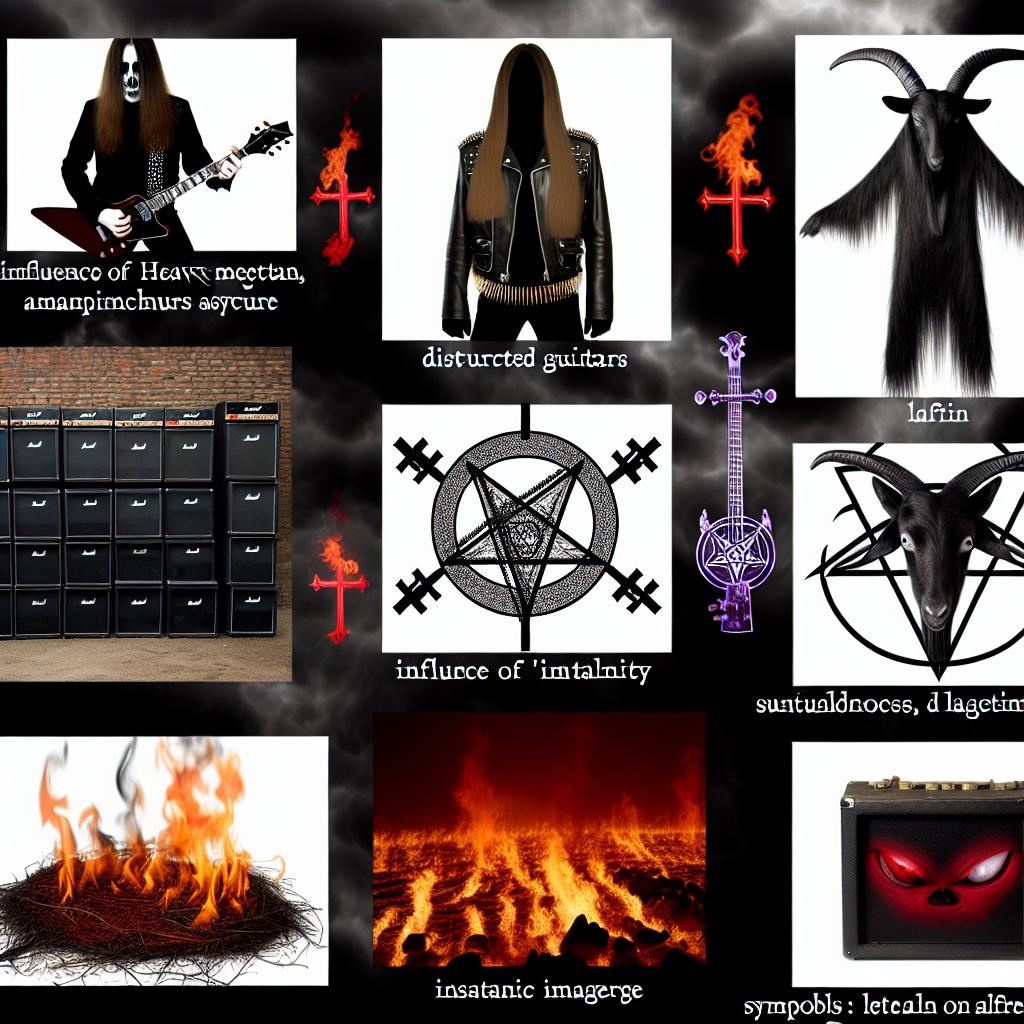The Role of Satanic Imagery in Heavy Metal

The Influence of Satanic Imagery in Heavy Metal
The incorporation of satanic imagery in heavy metal music has been a subject of intrigue, controversy, and academic study since the genre’s emergence in the late 1960s and early 1970s. This use of provocative symbols and themes has played a notable role in shaping the identity and cultural impact of the genre.
Historical Origins
Heavy metal’s foray into satanic themes can be largely traced back to the cultural context of the 1970s. The era was marked by significant social, political, and cultural upheavals. Amidst this backdrop, bands like Black Sabbath emerged as pioneers, using satanic imagery to reflect the tumultuous times. Their eponymous album, characterized by cryptic lyrics and dark, ominous album art, laid a foundational aesthetic for the genre. This album, often credited with defining the sound and style of early heavy metal, encapsulated the fascination and fear surrounding the occult and the enigmatic that permeated society at the time. The band’s deliberate choice to incorporate these themes can be viewed as a direct challenge to the status quo, resonating with audiences seeking alternative forms of expression.
The Appeal of Dark Imagery
The choice to utilize satanic imagery in heavy metal music is rooted in its ability to serve as a tool for rebellion. During the 1970s and 1980s, a period of notable conservatism and religious fervor, embracing the dark and forbidden was a powerful act of defiance. Heavy metal bands adopted satanic symbols like the pentagram and references to Lucifer as a means to express opposition to established societal norms. These symbols, often associated with witchcraft or dark magic, provoked strong reactions from the public, garnering attention and attracting followers who were intrigued by the imagery’s subversive nature. For many fans, embracing these symbols was not an endorsement of satanism per se, but rather an alignment with the music’s ethos of challenging authority and rejecting conventional cultural values.
Impact on Band Identity and Marketability
Satanic imagery has not only influenced the thematic content of heavy metal music but has also been a pivotal factor in the marketing and identity of bands within the genre. For instance, bands such as Slayer and Venom utilized satanic motifs to carve out distinct identities, setting themselves apart from other musical acts of the time. Slayer’s use of aggressive imagery and lyrics depicting themes of darkness and evil contributed to their image as one of the most intense bands in the genre. Similarly, Venom popularized the term “black metal” with their 1982 album, branding their music as the soundtrack for dark and satanic narratives. This strategic use of satanic imagery not only helped these bands develop a loyal fan base but also turned the controversy surrounding their themes into potent publicity, enhancing their marketability and solidifying their places in the annals of heavy metal history.
Cultural and Social Critiques
While some critics argue that the use of satanic imagery in heavy metal music promotes negative values or antisocial behavior, others see it as a form of cultural critique or social commentary. Many bands use these themes to satirically address broader societal issues, including human rights, political corruption, and religious hypocrisy. The artist’s decision to employ satanic imagery often acts as a metaphor, allowing listeners to explore complex ideas relating to personal freedom and the questioning of authority figures and dogmatic beliefs. This layered approach imbues the music with a depth that calls for reflection and interpretation on the part of the listener, rather than a simplistic understanding of endorsement of wickedness or malevolence.
Heavy metal’s association with dark and satanic imagery has had lasting effects on its perception within the mainstream cultural landscape. Despite criticisms, the genre’s capacity to provoke thought and challenge conventional narratives has ensured its continued relevance. For those interested in a deeper understanding of heavy metal’s use of provocative imagery and the socio-cultural implications of these choices, an examination of publications focusing on cultural studies or musicology is recommended. These academic sources provide nuanced insights into the dynamic interplay between music, symbolism, and societal norms.
Ultimately, the enduring fascination with satanic imagery within heavy metal music speaks to the genre’s ability to resonate with audiences on a visceral level. By tapping into universal themes of rebellion and the forbidden, the music continues to captivate and engage listeners worldwide, encouraging ongoing discussion and analysis of its rich and complex symbolism.